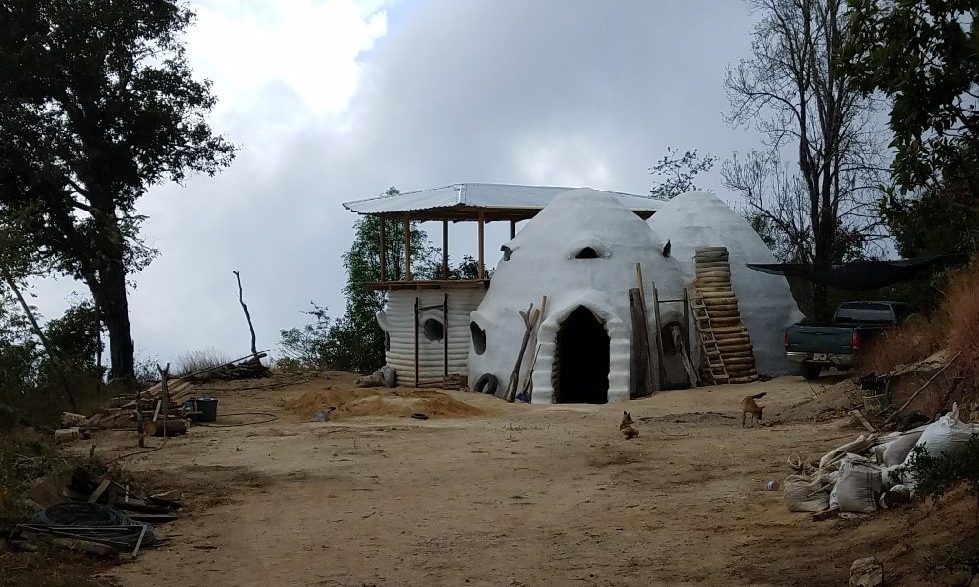It’s been two weeks since I returned from the Bard CEP field course on watershed management in Oaxaca, Mexico, and the trip feels surreal now. Surrounded by snow andpreoccupied by schoolwork, sometimes I catch myself daydreaming about the beautiful Sierra Sur mountains, my favorite place from our journey.

We spent a busy two days in the Sierra Sur. We went to San Miguel Suchixtepec, the site of a WWF sustainable water project; visited the farming cooperative Rancho Alternativo; met some employees of Mbis Bin, a local organization dedicated to environmental education and supporting community members interested in implementing sustainable practices; and toured Tierra Blanca Coffee Cooperative. It was a wonderful whirlwind.
Amidst all that, some special moments stand out in particular.
A Superadobe House in the Clouds
When we arrived at Rancho Alternativo, we were invited to lunch in the half-finished superadobe house of Don Claudio, built in the clouds on a mountain slope. The cohort was excited – we had anticipated learning about the famed superadobe since we first heard about it. It’s not just adobe, it’s superadobe; honestly, it was probably something about the prefix ‘super’ that captured our enthusiasm.

Superadobe is a new technology for building houses. Many people are familiar with adobe houses, which are typically made of clay earth, straw, and pine resin. The typical home in Mexico is adobe.
Superadobe differs in that it is a mix of earth, water, and calcium carbonate. A long plastic bag is filled with the mixture and used to build a round house by stacking the bags and compacting them, layer upon layer. The superadobe house is affordable, does not require destructive extractive materials, and is structurally solid and able to withstand earthquakes.
Well, we were enthralled. Our amazing guide, Sebastian, translated our questions about the materials, the architecture, the actual process of building, future plans for construction, and more… Don Claudio and his son, Romero, patiently answered all of them.
Superadobe is Super Local
Someone asked, “Where does the earthen material come from?” As I listened to their response with my elementary Spanish, I thought misunderstood. But Sebastian translated and confirmed, “Right here.” The builders had dug up and leveled the earth exactly where the house stands, to collect the materials to create the house itself. It doesn’t get more local than that, but imagine how much work it took!
For such a simple structure, superadobe is superior to a traditional “house of material” (like concrete). While adobe houses do require more labor, hiring people to help with construction keeps money in the community compared to “modern” homes, which use expensive materials and whose construction ultimately benefits distant large businesses.
It’s funny that, of all the amazing projects we learned about, this superadobe home made such a lasting impression on me. Since being back at Bard, I’ve realized that I love superadobe for more than the ‘super’ prefix–it’s simple, socially and environmentally sustainable, as well as beautiful and strong. All our solutions should strive for that.


